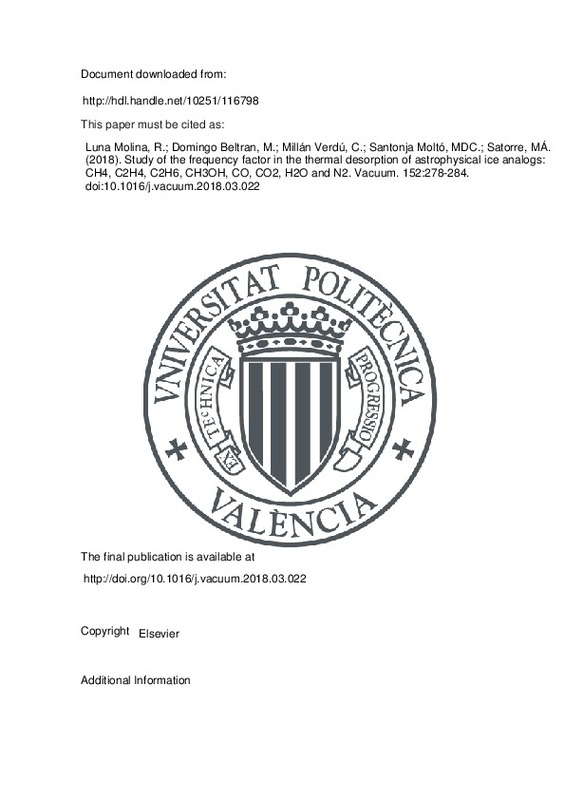JavaScript is disabled for your browser. Some features of this site may not work without it.
Buscar en RiuNet
Listar
Mi cuenta
Estadísticas
Ayuda RiuNet
Admin. UPV
Study of the frequency factor in the thermal desorption of astrophysical ice analogs: CH4, C2H4, C2H6, CH3OH, CO, CO2, H2O and N2
Mostrar el registro completo del ítem
Luna Molina, R.; Domingo Beltran, M.; Millán Verdú, C.; Santonja Moltó, MDC.; Satorre, MÁ. (2018). Study of the frequency factor in the thermal desorption of astrophysical ice analogs: CH4, C2H4, C2H6, CH3OH, CO, CO2, H2O and N2. Vacuum. 152:278-284. https://doi.org/10.1016/j.vacuum.2018.03.022
Por favor, use este identificador para citar o enlazar este ítem: http://hdl.handle.net/10251/116798
Ficheros en el ítem
Metadatos del ítem
| Título: | Study of the frequency factor in the thermal desorption of astrophysical ice analogs: CH4, C2H4, C2H6, CH3OH, CO, CO2, H2O and N2 | |
| Autor: | ||
| Entidad UPV: |
|
|
| Fecha difusión: |
|
|
| Resumen: |
[EN] In this work the frequency factor and the influence of the temperature on this parameter, for zeroth order desorption processes, has been experimentally determined for eight molecules of astrophysical interest. In the ...[+]
|
|
| Palabras clave: |
|
|
| Derechos de uso: | Reconocimiento - No comercial - Sin obra derivada (by-nc-nd) | |
| Fuente: |
|
|
| DOI: |
|
|
| Editorial: |
|
|
| Versión del editor: | http://doi.org/10.1016/j.vacuum.2018.03.022 | |
| Código del Proyecto: |
|
|
| Agradecimientos: |
|
|
| Tipo: |
|







![[Cerrado]](/themes/UPV/images/candado.png)


